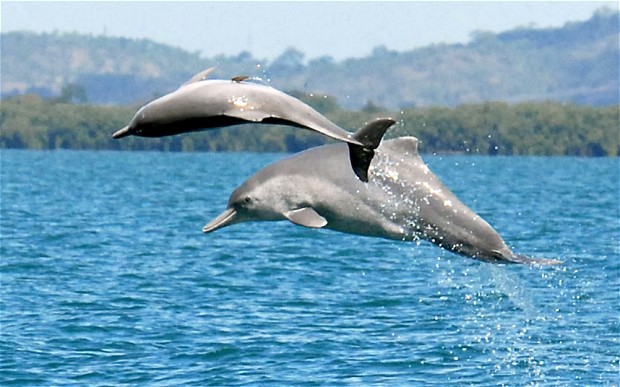A total of 47 Indo-Pacific humpback dolphins have been spotted in the Dayer Nakhiloo National Marine Park in Bushehr Province since a field monitoring project was launched in February 2014.
The dolphin is listed as ‘nearly threatened’ by the International Union for Conservation of Nature, but some argue that it meets the IUCN’s requirements for a ‘vulnerable’ status.
“As such, protecting the animal is one of the most important conservation projects in Iran,” Nazanian Mohsenian, director of the Conservation of the Persian Gulf Humpback Dolphin project, told MANA news agency.
The project is jointly carried out by the Department of Environment and local NGOs.
“Every month, a specialized marine patrolling team tours the waters for a week to detect undocumented humpback dolphins,” she said. “The team consists of three members, but local people, environmentalists and a petrochemical company also lend a hand.”
Humpback dolphins are identified by the lines and patterns on their dorsal fins. Once the team spots a dolphin, they take photos of the fin at a 50-meter distance and then study the pictures to identify the animal.
“Some of the dolphins permanently roam the regional waters while others only appear at certain times of the year,” said Mohsenian.
A number of young dolphins have also been spotted and will mature in two to three years. These young animals, which are born between November and February, swim alongside their mothers all day long.
Mohsenian lamented that the entire area of the park cannot be monitored due to lack of equipment and funding but also made known that the plan will be carried out for another year in spite of the challenges.
Humpback dolphins are characterized by the conspicuous humps and elongated dorsal fins found on the backs of adults of the species. They are found close to shores along the coast of West Africa (called the Atlantic species) and right along the coast of the Indian Ocean from South Africa to Australia (known as the Indo-Pacific species). Adults can reach from 1.8 to 2.6 meters and weigh in the range of 100 to 139 kilograms.


